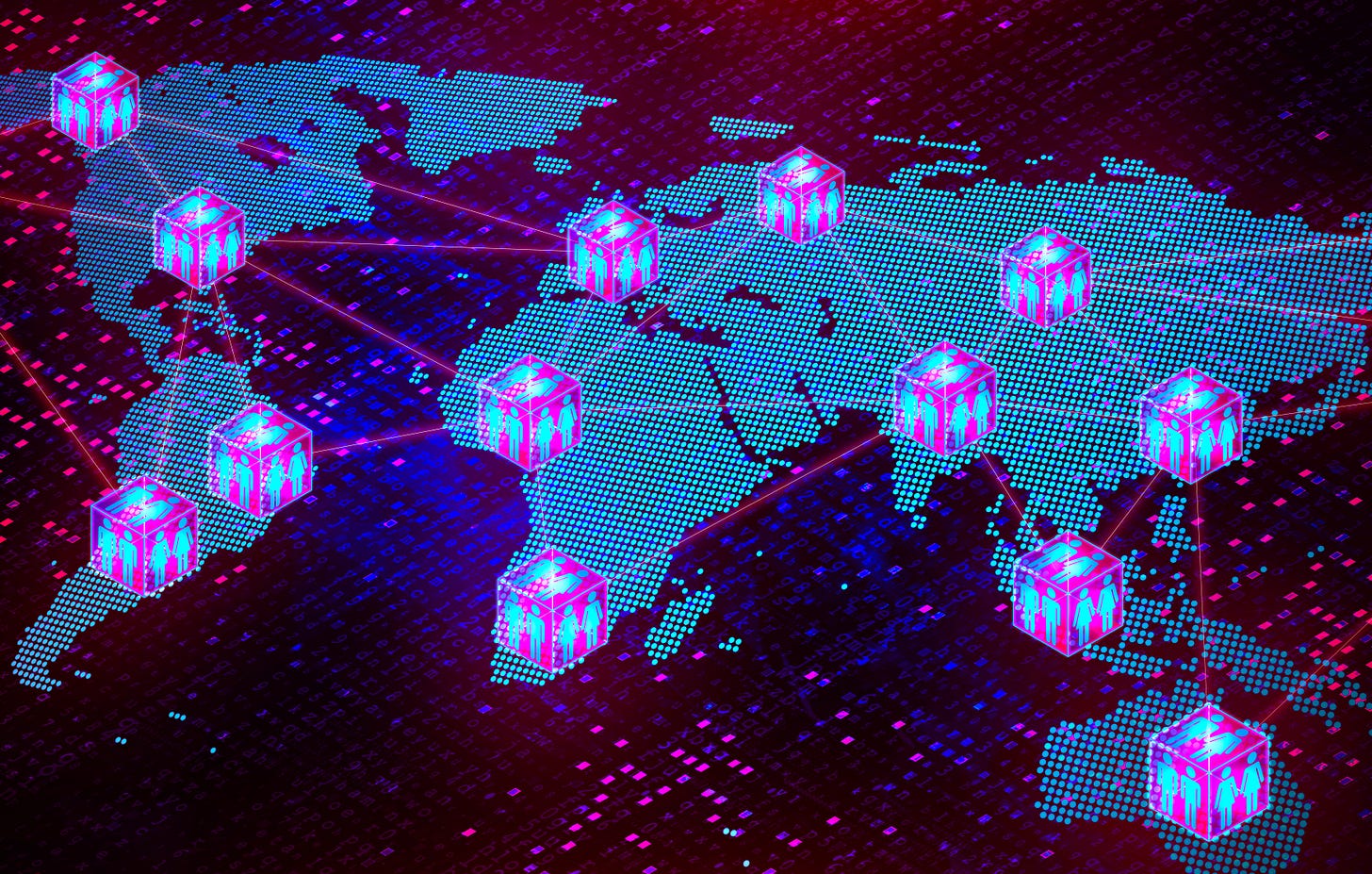Foundations of Distributed Ledger Technology Part 5: DAO = Decentralized Autonomous Organization
DLT Foundations
8th April 2024.
In Part 3 I presented different components of DeFi. This topic is closely related to DeFi and is about creating decentralized organizations.

How do DAOs = Decentralized Autonomous Organizations differ from any other organization? Let’s break the acronym down:
Decentralized means that there is no central leadership. It is split among the members of the organization
Autonomous means that it is independent and not governed by anyone else.
An organization is a group of people coming together for a shared cause.
A traditional Organization has a pyramid structure, with the board of directors / stakeholders making all the decisions.
With the traditional pyramid structure, it is absolutely crucial for an organization to succeed in the long run that the leaders have the organizations best interest in mind, and not just want to inflate the stock prices and fill their own pockets. Just take a look at Boeing.
A DAO is a flat structure, like a pancake, where the workers have the same authority as the creators. Because everyone is a stakeholder and should have a say in how the business is run. The specific set of rules are enforced on a blockchain. With the rules set on the blockchain, it is not possible for any leader-type person to override any decisions, or pay out bonuses without the stakeholders permission.
DAOs are designed so you don’t have to trust other members in your organization. You don’t even have to have met them in person, or live in the same country. As long as you are working towards the same goal, you don’t have to worry that you are getting cheated.
How DAO works
DAOs operate using smart contracts. These smart contracts establish the DAO’s rules. Those with a stake in a DAO then get voting rights and may influence how the organization operates by deciding on, or creating new governance proposals.
Basic setup of a DAO
A DAO is created in 3 steps:
A Smart contract is being developed by the creators. Once fully tested and verified, the core of the DAO is built.
Funding by it’s members are added. This is typically done by selling tokens that represents stakes hold in the DAO. At this point, the creators have no more voting rights than the other members/stakeholders.
The DAO is deployed on the blockchain. From this point on, stakeholders decide on the future of the organization.
The Advantages of DAO
Democracy - The lack of a hierarchy means any stakeholder can put forward an innovative idea that the entire group will consider and improve upon. Internal disputes can be solved through the voting system, in line with the pre-written rules in the smart contract. No longer will some leader-type person take charge of the whole project and run it to the ground.
Grassroot funding - Anyone can be an investor, as long as they fulfill the initial rules of the Smart Contract. There is no legal entity that is preventing regular people from participating. By allowing regular people to pool funds, and not just those with millions of dollars, DAO gives opportunities to invest in early-stage startups and decentralized projects, many that may not have been possible to fund before, while sharing the risk or any profits that may come out of them.
Legal Gray-zone - Some people might look at this as a concern, but I consider it a main benefit that legal authorities don’t know how to enforce their regulations on a decentralized company without leaders, that is possibly operating across borders. That is what being autonomous is all about! Over-regulation and high taxes is what triggered the decentralization process in the first place.
DAO Considerations
One concern is that the majority may not always the best suited to make important economic decisions. However, the majority will always vote with the companys best interest, because that is in every stakeholders best interest. Even though they might not choose the right decision every time.
The DAO
Another concern is that the technology is very new, and software bugs can occur. In 2016, the biggest DAO ever funded called “The DAO”, had $60 million worth of tokens drained by a hacker. It forced the Ethereum developers to make a hard fork on the network so that people could get their investments back. The dramatic outcome is that the Ethereum network has been split between Ethereum, which is the hard fork rollback before the hack took place, and the Ethereum Classic, which is the original fork.
But examples like this one are more or less temporary problems. There is always challenges with new technology. Once the majority of caveats are ironed out, DAOs will be world-changing.
Appendix
Special Mentions
I want to thank all the authors at Cointelegraph.com. Your articles are worth gold when learning about DLT and DeFi.




